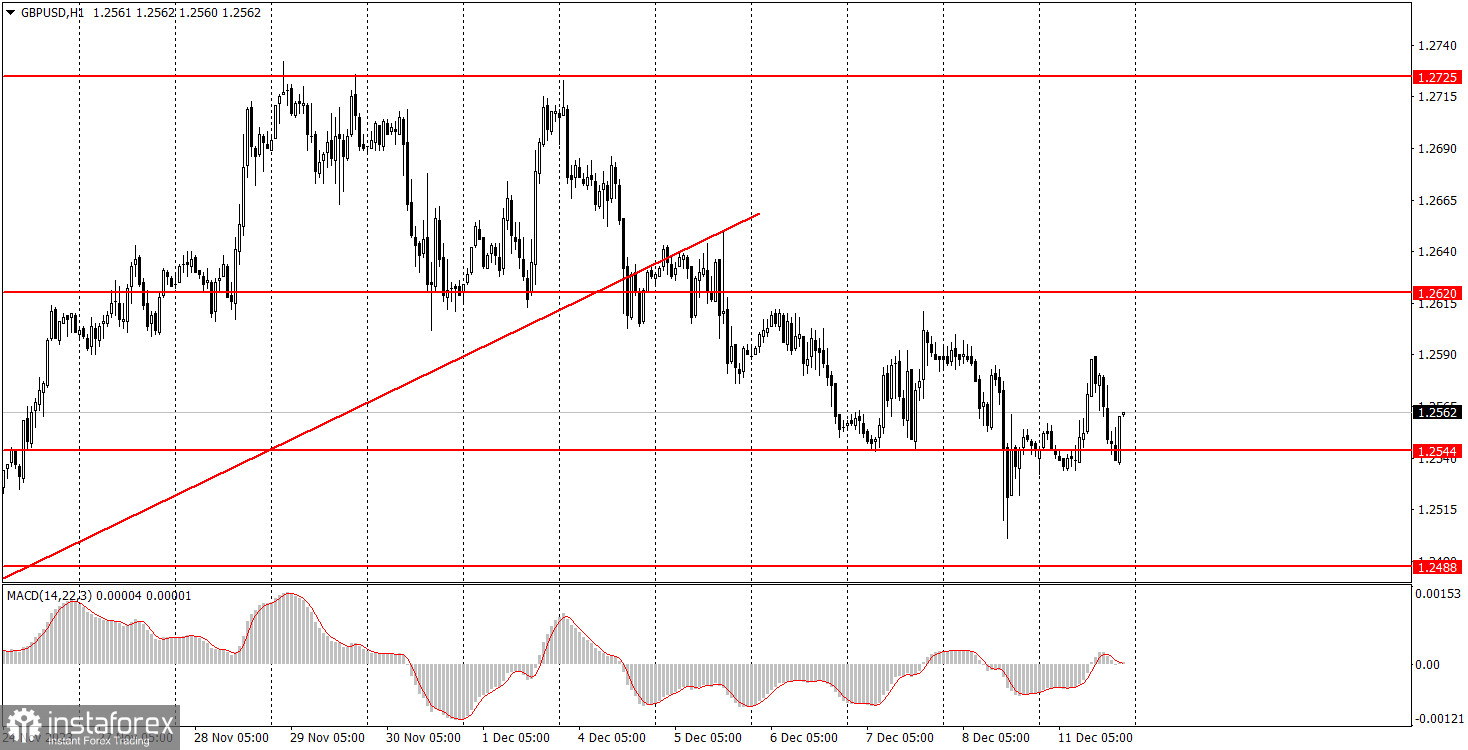Analysis of macroeconomic reports:

There's a full plate of macroeconomic events slated for Tuesday and it is worth paying attention to almost all of them. First, the UK is set to release reports on the unemployment rate, the number of unemployment benefit claims, and changes in average wages. We believe the second and third reports will carry the most weight. They may impact the movement of the British pound only in the case of a significant deviation of the actual value from the forecast.
Next, relatively minor data on economic sentiment for Germany and the EU from the ZEW Institute. We don't expect a strong market reaction here, at most around 20 pips. The main item on the day's agenda will be the US inflation data, directly affecting the Federal Reserve's monetary policy. Although the US central bank is currently not ready to change the key rate, this report is still important. Since the Fed is unlikely to raise the rate, this report may only trigger the dollar's decline. However, the market has repeatedly shown that its reaction does not always follow logic.
Analysis of fundamental events:
No fundamental events are planned for Tuesday. The downtrend persists for both the euro and the pound, so both currencies may gradually trade lower. The US inflation report may significantly impact trader sentiment, but it is difficult to predict its actual value.
General conclusion:
On Tuesday, we will highlight the UK and US reports. Both currency pairs continue to decline, and it needs substantial reasons to correct higher. There could be several reasons for it this week, but traders will need to react in real-time rather than in advance. On Tuesday, we advise you to trade cautiously at the beginning of the US session.
Basic rules of a trading system:
1) Signal strength is determined by the time taken for its formation (either a bounce or level breach). A shorter formation time indicates a stronger signal.
2) If two or more trades around a certain level are initiated based on false signals, subsequent signals from that level should be disregarded.
3) In a flat market, any currency pair can produce multiple false signals or none at all. In any case, the flat trend is not the best condition for trading.
4) Trading activities are confined between the onset of the European session and mid-way through the U.S. session, post which all open trades should be manually closed.
5) On the 30-minute timeframe, trades based on MACD signals are only advisable amidst substantial volatility and an established trend, confirmed either by a trend line or trend channel.
6) If two levels lie closely together (ranging from 5 to 15 pips apart), they should be considered as a support or resistance zone.
How to read charts:
Support and Resistance price levels can serve as targets when buying or selling. You can place Take Profit levels near them.
Red lines represent channels or trend lines, depicting the current market trend and indicating the preferable trading direction.
The MACD(14,22,3) indicator, encompassing both the histogram and signal line, acts as an auxiliary tool and can also be used as a signal source.
Significant speeches and reports (always noted in the news calendar) can profoundly influence the price dynamics. Hence, trading during their release calls for heightened caution. It may be reasonable to exit the market to prevent abrupt price reversals against the prevailing trend.
Beginning traders should always remember that not every trade will yield profit. Establishing a clear strategy coupled with sound money management is the cornerstone of sustained trading success.






















